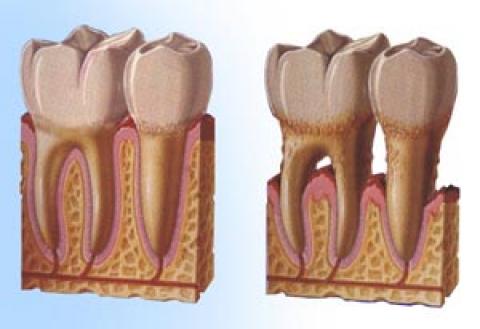Periodontology
Periodontium is the tissue surrounding the tooth root.
The periodontal lesions are incited by many internal and external, local and general factors:
- Ignoring oral hygiene rules.
- Over-loading or under-loading teeth and the adjacent tissue.
- Incorrect prosthesis and tooth filling.
- Defects occurring in the course of orthodontic treatment, irregular bite and misaligned teeth .
- Metabolism, diseases of internal organs, organs of immune system and hematopoietic organs, pregnancy.
- Junior age.
- Lack of vitamins, etc.
Each year the influence of negative factors of environmental and internal origin on the organism and the oral cavity increases, thus increasing the number of patients with lesions of periodontal tissue. In the initial period of the disease gums slightly bleed and swell.
In the acute period of the disease the following symptoms are manifested:
- Gum inflammation.
- Receding gums.
- Pus in the gum pockets.
- Loose or shifting teeth, bad breath.
Gingivitis is a gumboil incited by local and general adverse factors. The inflammatory process involves only the gums. Gingivitis requires a full treatment if it is not caused by another disease. In periodontitis the inflammation involves the bone tissue which supports the teeth. Bone tissue inflammation causes loose teeth, biting and chewing dysfunctions. The process may end in the loss of the tooth. Periodontitis is a multifactor disease and requires an integrated treatment.
The treatment approaches are:
- conservative therapy;
- surgery intervention.
Conservative treatment includes professional oral hygiene, removal of gum plaque as well as medication assignment if required (anti-inflammatory agents, local regulators of the immune system). Surgical intervention includes open or closed curettage, flap surgery. Open curettage allows penetrating into deeper layers of periodontium by freeing the layers of tissue.



